Text

Starting a podcast on YouTube has become an increasingly popular way for individuals to share their thoughts, stories, and expertise with a wide audience.
Whether you're passionate about a particular topic, eager to connect with like-minded individuals, or simply looking to explore a new creative outlet, launching your own podcast on YouTube can be an exciting venture.
However, diving into the world of podcasting can feel daunting, especially for beginners unsure of where to start. Thankfully, with the right guidance and a clear plan of action, anyone can embark on this journey with confidence.
In this infographic, we'll walk you through the essential steps to kickstart your podcasting journey on YouTube, from conceptualizing your content to recording and publishing your episodes.
So, if you're ready to amplify your voice and share your message with the world, let's dive in and explore how to start a podcast on YouTube.
#artificial intelligence#technology#business#content creator#transcript#video post#podcast transcript#podcast#podcasting#youtube#youtube video#youtube podcast
0 notes
Text

#artificial intelligence#transcript#technology#content creator#search engine optimization#podcasting#podcast#podcast transcript
0 notes
Text
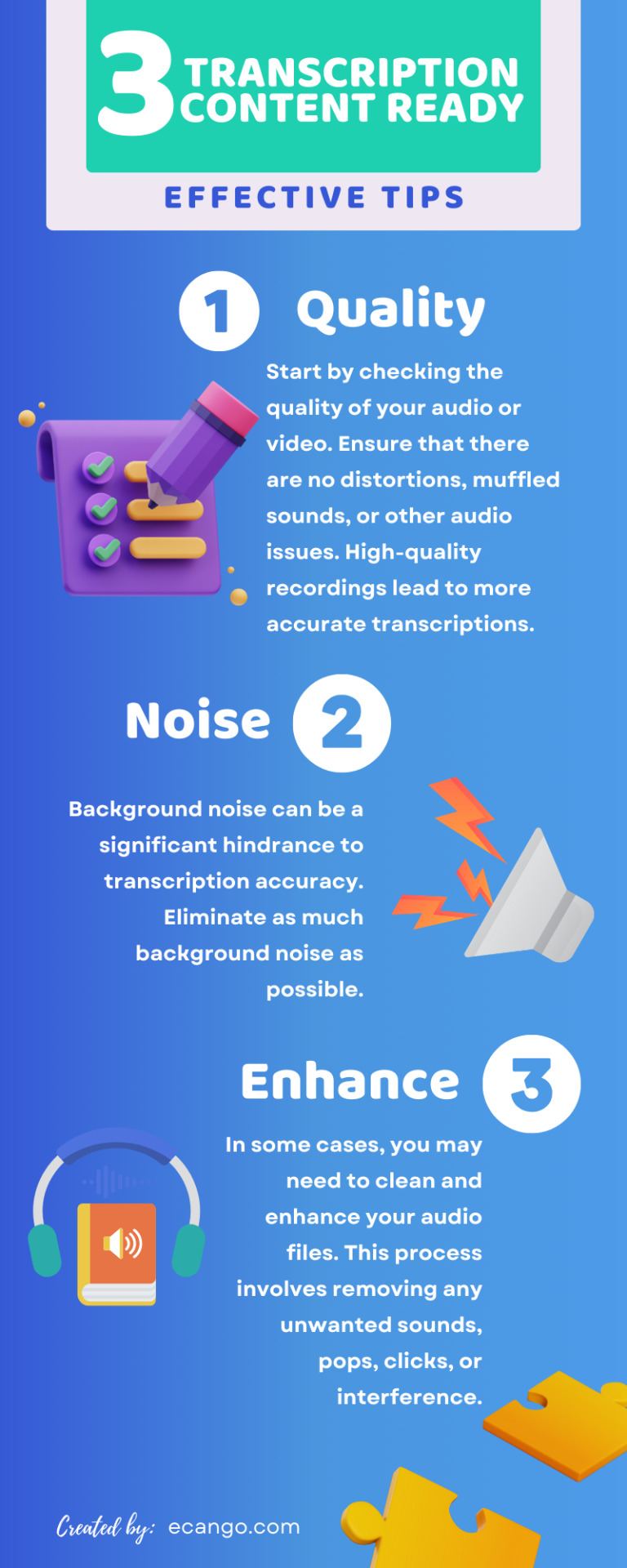
Here's Your Checklist for Transcription Ready Contents!
Follow us at www.ecango.com for more helpful tips.
#ecango#transcriptionist#video transcription#transcribing tips#transcribing practice#podcast transcript#video post#technology#artificial intelligence#transcript#content creator#search engine optimization#infographic
0 notes
Text

Navigate the landscape of transcription tools with care! When choosing the right tool for your needs, consider factors like accuracy, ease of use, and customization options.
The key to seamless transcription lies in thoughtful consideration. For a top-notch solution, explore the capabilities of Ecango at the forefront of transcription excellence.
#TranscriptionTools #Consideration #Ecango
#technology#transcribing tips#transcript#artificial intelligence#content creator#business#entrepreneur#video post#search engine optimization#audio transcription services#video transcription
0 notes
Text

Unlocking Efficiency: Transforming Professional Productivity with Audio-to-Text Transcription. Seamlessly convert spoken words into written text, enabling faster note-taking, accurate documentation, and efficient information retrieval. Elevate your workflow and communication with this powerful tool! 🎙️📝 #Productivity #Transcription #ProfessionalAdvantage
Learn more tips at www.ecango.com
#business#technology#entrepreneur#strategy#transcript#artificial intelligence#content creator#search engine optimization#startup#video post
0 notes
Text

By incorporating these strategy tips into your transcription practice, you can gradually enhance your skills and become a more proficient and reliable transcriber.
Remember that improvement takes time and dedication, so stay patient and persistent in your pursuit of mastering transcription.
#strategy#tips#transcriptionist#transcribed#content creator#business#technology#artificial intelligence#transcript#entrepreneur#transcribing tips#transcribing practice#startup#video post
0 notes
Text

Empower your content with the perfect caption! 📸 Explore our infographic on captioning options to enhance engagement, convey messages effectively, and boost your online presence. Choose the right caption style for every occasion. Elevate your content game with Ecango! 🚀 #CaptioningOptions #ContentEnhancement #Ecango
#caption#technology#content creator#startup#video post#search engine optimization#subtitles#artificial intelligence#transcript#entrepreneur#subtitlingservices
0 notes
Text

Elevate your transcription game with our exclusive infographic on 'How To Kickstart Your Transcription Journey Hack'
Dive into the ultimate transcription hacks and amplify your efficiency with Ecango's cutting-edge solutions.
#TranscriptionHacks #EcangoInnovation #JourneyToPrecision #UnlockYourPotential
#strategy#transcript#artificial intelligence#business#technology#entrepreneur#content creator#video post#search engine optimization#startup#infographic
0 notes
Text
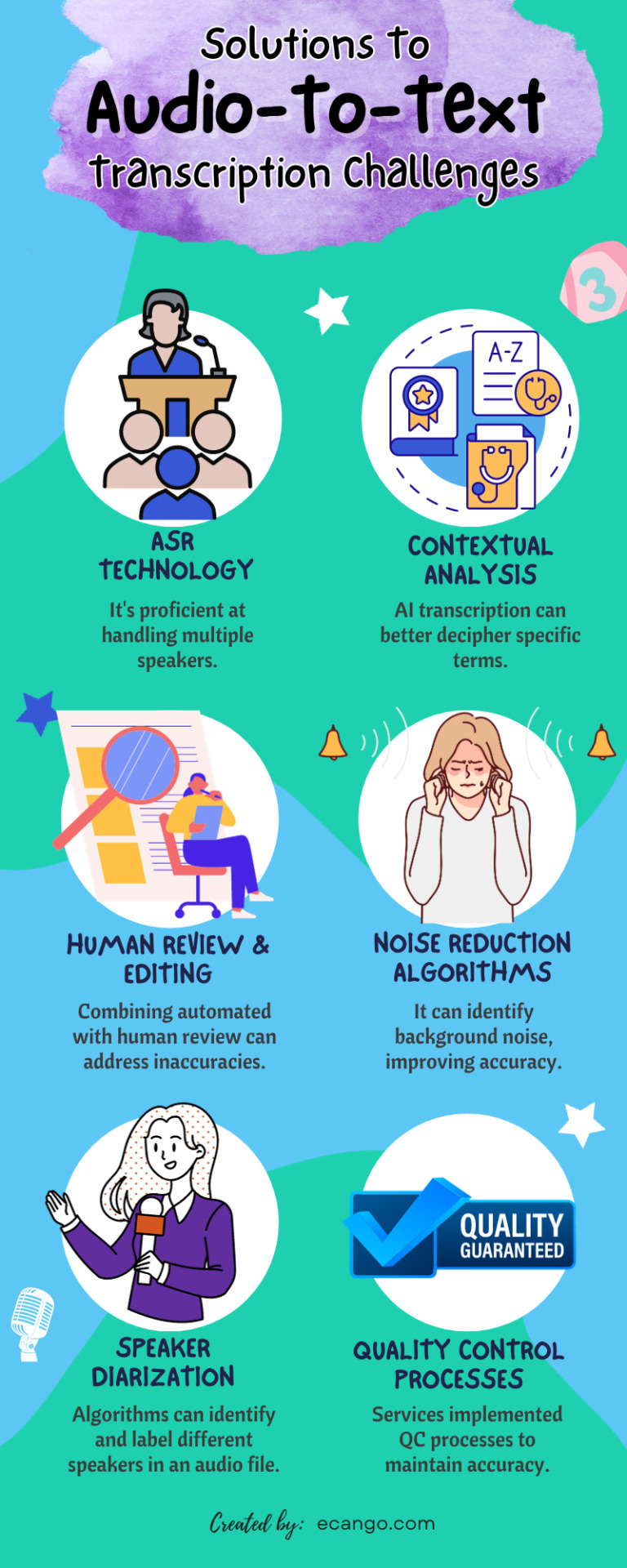
This infographic serves as a visual guide to navigating the complexities of audio-to-text transcription.
By implementing these solutions and leveraging the capabilities of services like Ecango, businesses and individuals can enjoy enhanced accuracy and efficiency in converting spoken words into written text.
#ecango#transcript#artificial intelligence#technology#ai tools#ai technology#transcribed#transcriptionist#entrepreneur#business#content creator#search engine optimization#video post#strategy
0 notes
Text
Choosing the Right Converter Tool Made Easy with Ecango
Hey there! If you've ever found yourself scratching your head over choosing the perfect converter tool, you're not alone. The market is flooded with options, making it a bit overwhelming.
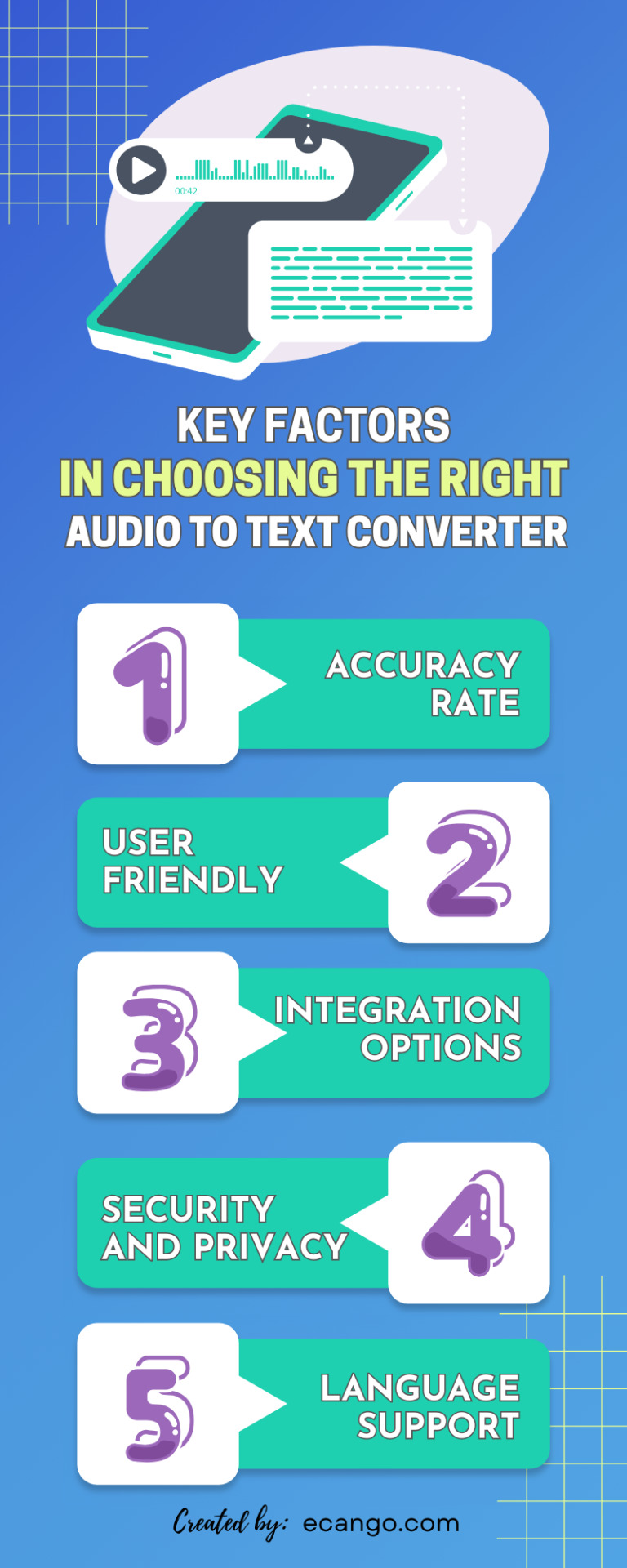
Ecango stands out as a reliable, user-friendly, and cost-effective choice. So, why settle for less when you can make your life easier with Ecango? Choose wisely, and happy converting!
#audio to text#speech to text#communication#ecango#transcript#artificial intelligence#technology#content creator#entrepreneur#business#search engine optimization
0 notes
Text
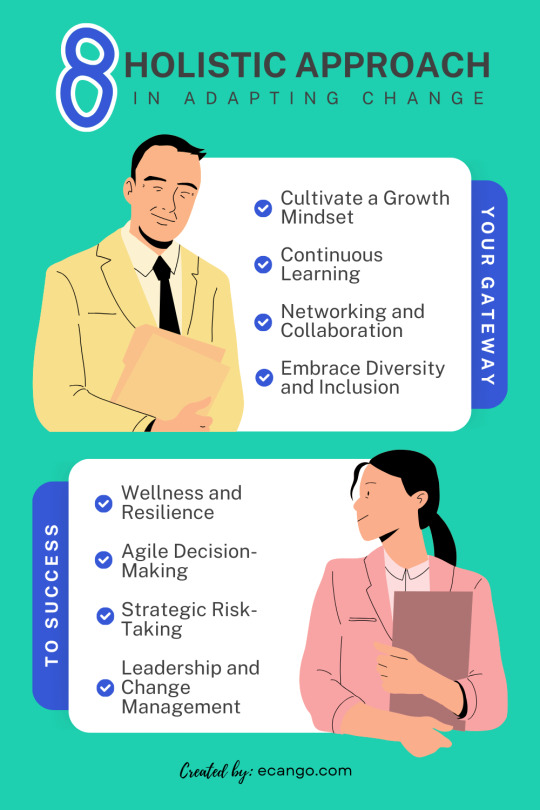
Embracing change is like stepping into a new chapter of your favorite book – unpredictable, exciting, and full of potential twists. Life throws curveballs, shifts gears, and takes unexpected turns. Adapting to change is not just a skill; it's a survival strategy, a passport to a richer, more fulfilling existence.
Think about it: when the familiar becomes unfamiliar, we're faced with a choice. We can resist, cling to the past, and yearn for what was, or we can open ourselves to the possibilities that change brings. It's akin to learning a new language. Initially challenging, but as you immerse yourself, you discover a whole new way to express yourself.
In this post, let's delve into the essential holistic strategies for mastering the art of adaptation. Follow Ecango for more helpful tips!
0 notes
Text
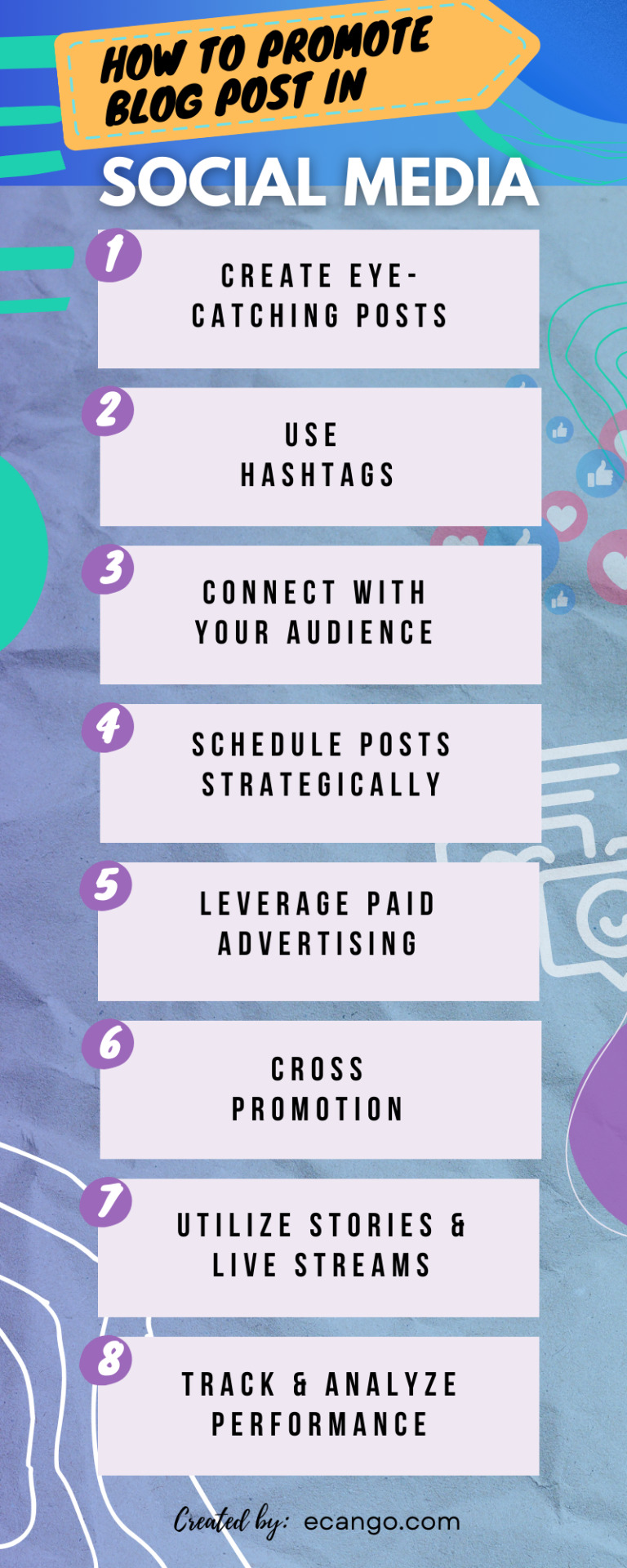
In a world dominated by tweets, snaps, and stories, your content deserves to shine. Uncover the game-changing techniques that will skyrocket your blog's visibility and engagement.
Don't let your hard work go unnoticed—learn the strategies that will make your content go viral. It's time to amplify your voice in the digital realm! 🚀
#social media#technology#artificial intelligence#transcript#strategy#content creator#entrepreneur#blogger#blog#tumblog#digital marketing#social media marketing#strategic planning
0 notes
Text
Pro Tips for Effective Media Library Handling in Transcription and Subtitling

In today's digital age, the demand for accurate transcription and high-quality subtitling services has skyrocketed. Whether it's for video content, podcasts, webinars, or other forms of multimedia, the ability to effectively handle media libraries is essential for professionals in these fields.
The process of transcribing audio and creating subtitles not only requires a keen understanding of language and context but also proficient management of media assets.
Let’s delve into pro tips and strategies for efficiently handling media libraries in the context of transcription and subtitling. These insights will empower transcriptionists, subtitlers, and content creators to streamline their workflows, enhance accuracy, and deliver exceptional results to their audiences.
Whether you're a seasoned expert or just starting in this field, these tips will prove invaluable in your journey towards media transcription and subtitling excellence.
Organizing Your Media Files

Effective organization of your media files is crucial for efficient transcription and subtitling processes. A well-structured media library can save you a significant amount of time and effort.
Here are some tips for organizing your media files:
1. File Naming: Develop a consistent and descriptive file naming convention. Include relevant information such as project name, date, and content description. For example, "ProjectName_Episode1_2023-10-05_Interview.mp4."
2. Folder Structure: Create a clear folder structure to categorize your media files. Use folders to separate projects, types of content, or stages of production. This helps you quickly locate the files you need.
3. Metadata: Utilize metadata tags to add additional information to your media files. This can include details like keywords, project notes, and timestamps. Metadata makes it easier to search for and manage files.
4. Version Control: If you have multiple versions of the same media file (e.g., different edits or drafts), use version control to keep them organized. Consider appending version numbers or dates to filenames.
5. Backup Strategy: Implement a robust backup strategy to protect your media library from data loss. Regularly back up your files to external drives or cloud storage services.
Choosing the Right Transcription Tools
Selecting the appropriate transcription tools is crucial for accuracy and efficiency in your transcription and subtitling work.
Here are some considerations when choosing these tools:
1. Transcription Software: Look for transcription software or services that offer features like automatic speech recognition (ASR), timestamping, and easy integration with your media library.
2. Subtitle Software: For subtitling, choose a dedicated subtitle editing tool that supports industry-standard formats like SRT, VTT, or SCC.
3. Compatibility: Ensure that the transcription and subtitle tools you select are compatible with your media file formats. Some tools may have limitations on the types of files they can work with.
4. Accuracy and Quality: Consider the accuracy of the transcription tool's speech recognition system. High-quality ASR technology can save you time on manual corrections.
5. Collaboration Features: If you're working in a team, look for tools that offer collaboration features, such as the ability to share transcripts or subtitle projects with colleagues and track changes.
6. Cost and Licensing: Evaluate the cost of the tools, whether they offer free trials, and whether they require ongoing subscriptions or one-time purchases.
By carefully organizing your media files and selecting the right transcription and subtitling tools, you'll set a strong foundation for efficient and effective media library handling in your transcription and subtitling workflow.
Efficient Transcription Workflow
Creating an efficient transcription workflow is crucial for timesaving and maintaining accuracy in transcription and subtitling projects.
To streamline this process, it's recommended to establish a transcription template with timestamps and speaker labels, embrace keyboard shortcuts for quicker navigation, begin at a comfortable transcription speed and gradually increase it.
Utilize automatic timestamping features in transcription software and allocate time for proofreading and editing to rectify potential errors from automated transcription tools, ensuring consistency and precision throughout your projects.
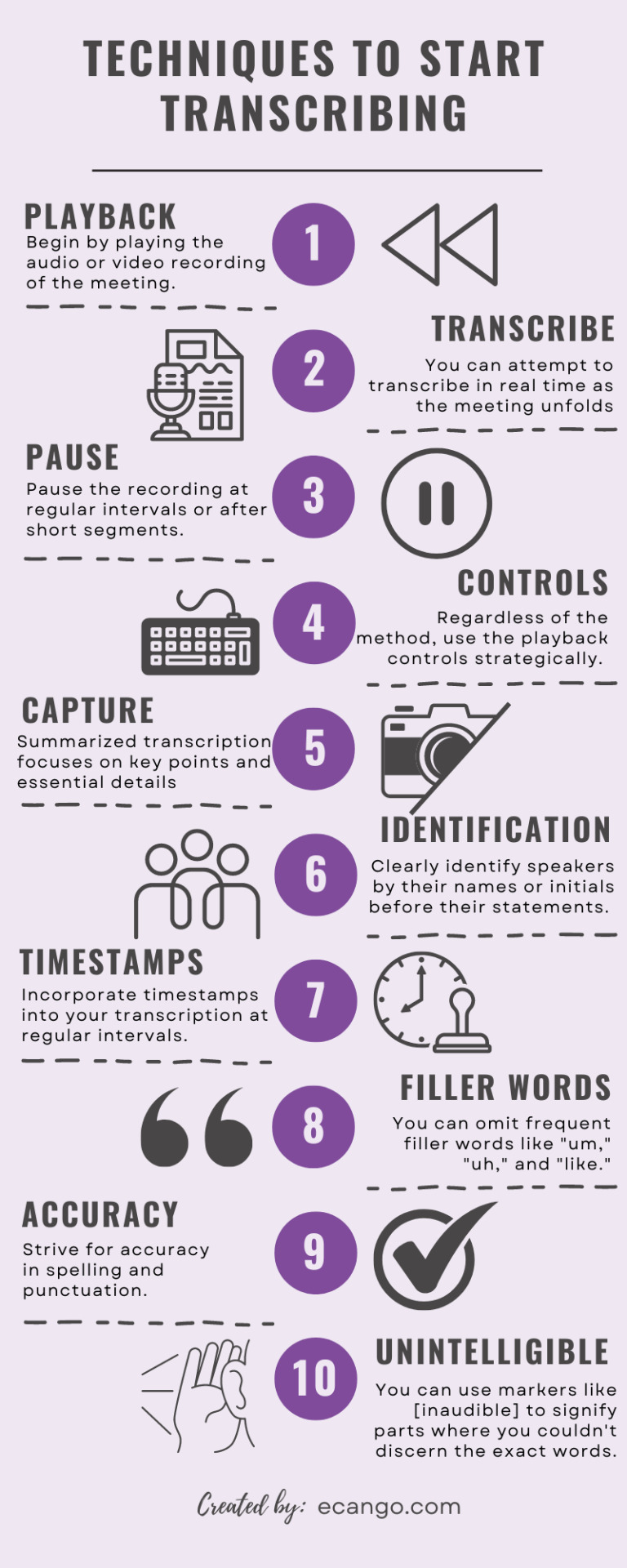
Subtitling Best Practices
Subtitling requires attention to detail and adherence to specific guidelines for readability and synchronization with the video.
Here are some best practices for subtitling:
1. Subtitle Length: Keep subtitles concise and readable. Limit the number of characters per line and the number of lines on the screen at once. Avoid overwhelming viewers with lengthy subtitles.
2. Timing: Ensure that subtitles appear and disappear in sync with the spoken words and natural pauses in the dialogue. Use timestamping features to fine-tune the timing.
3. Speaker Identification: Clearly identify different speakers in the subtitles, especially in conversations or interviews. Use speaker labels to indicate who is speaking.
4. Font and Styling: Choose a legible font and ensure that the subtitles are easily readable against the background. Consider using bold text for emphasis or italics for off-screen dialogue.
5. Consistency: Maintain consistency in subtitle formatting, including font size, color, and placement. Consistency enhances the viewing experience.
6. Cultural Sensitivity: Be sensitive to cultural nuances and idiomatic expressions when translating subtitles. Ensure that translations accurately convey the intended meaning.
7. Testing: Test your subtitles on different devices and screen sizes to ensure they are legible and properly synchronized.
8. Compliance: If your subtitles are intended for a specific platform or region, be aware of any subtitle format requirements or guidelines set by that platform or region.
Implementing this transcription and subtitling best practices, you'll enhance the quality and professionalism of your media content while maintaining efficiency in your workflow.
Collaboration and Communication

Effective collaboration and communication are key to successful media library handling in transcription and subtitling projects, especially when working in a team or with clients.
Here are some suggestions for promoting teamwork and effective communication:
Project Management Tools: Consider using project management tools like Trello, Asana, or Slack to keep track of tasks, deadlines, and project progress. These tools can help your team stay organized and informed.
2. Clear Instructions: When assigning tasks or receiving instructions, provide clear and detailed information about expectations, guidelines, and any specific requirements for the transcription and subtitling work.
3. Feedback Loops: Create a feedback loop with team members or clients to ensure that transcripts and subtitles meet their expectations. Regularly seek feedback and make necessary revisions promptly.
4. Communication Channels: Establish efficient communication channels within your team. Whether it's email, chat, video calls, or project management software, choose a method that ensures everyone stays informed and can easily reach each other.
5. Version Control: If multiple team members are working on the same project, implement version control practices to avoid conflicts and maintain a history of changes made to transcripts and subtitles.
6. File Sharing: Use secure and convenient file-sharing platforms like Google Drive, Dropbox, or SharePoint to share media files, transcripts, and subtitle files. Ensure that access permissions are appropriately set.
7. Conflict Resolution: Develop a protocol for handling conflicts or disagreements within the team. Have a designated person or process in place to address and resolve issues promptly.
8. Documentation: Maintain clear documentation of project details, decisions, and communication records. This can be invaluable for reference and accountability.
9. Client Updates: If you're working with clients, provide regular project updates, status reports, and milestones to keep them informed about progress and any potential delays.
10. Language and Cultural Considerations: If working with international clients or team members, be mindful of language barriers and cultural differences in communication. Make sure that everyone is aligned when it comes to project objectives and anticipated outcomes.
Effective collaboration and communication not only improve the efficiency of your transcription and subtitling projects but also enhance overall project satisfaction and the quality of the final deliverables.
Backup and Data Management
Backup and Data Management is essential in the digital age to protect data from various threats like hardware failure, malware, and accidents. It ensures data security, business continuity, and compliance with regulations.
Here are the key components:
1.Data Backup: This involves creating copies of your data and storing them in a separate location. Backup can be done on-site, off-site, or in the cloud, depending on your needs and preferences.
2. Data Recovery: A solid data management strategy includes robust recovery procedures to ensure quick and efficient data restoration in case of data loss. This involves not only the backup itself but also the ability to retrieve and use the backed-up data effectively.
3. Data Archiving: Archiving involves the long-term storage of data that is not actively used but may be required for compliance, historical analysis, or reference purposes.
4. Data Versioning: Maintaining multiple versions of files is crucial, especially in collaborative environments. You can use this functionality to return to previous versions when necessary.
5. Data Lifecycle Management: Understanding the lifecycle of data, from creation to disposal, helps in efficient data management. It includes policies and procedures for data retention and deletion.
Effective data management is crucial for individuals and businesses to safeguard their valuable information.
Future-Proofing Your Media Library
In today's fast-paced digital age, the importance of future-proofing your media library cannot be overstated.
With the constant evolution of technology and the ever-changing digital landscape, media collections face numerous challenges, from format obsolescence to content degradation.

However, by implementing effective strategies and staying abreast of emerging trends, you can safeguard your media assets, ensuring they retain their value and accessibility for years to come.
1. Format Flexibility: One of the primary concerns in future-proofing your media library is staying ahead of format changes. As technology advances, file formats come and go. To combat this, consider adopting widely accepted, open-source formats for your media files. Additionally, maintain backups in multiple formats to hedge against sudden shifts in industry standards.
2. Metadata Management: Efficient metadata management is crucial for the long-term viability of your media library. Robust metadata ensures that your content remains discoverable and relevant, even as your collection grows. Implementing standardized metadata schemas and diligently updating information can enhance the searchability and organization of your media assets.
3. Preservation Best Practices: Implementing preservation best practices is essential to safeguard against content degradation. Regularly assess the condition of your media and establish a digitization and migration plan for deteriorating formats. Employing checksums and regular integrity checks can help identify and address data corruption.
4. Cloud-Based Storage: Embracing cloud-based storage solutions can be an effective way to future-proof your media library. Cloud platforms often offer scalable and secure storage options, ensuring that your content remains accessible regardless of your organization's growth or technological changes.
5. Rights Management: Ensure that you have a comprehensive understanding of the rights associated with your media assets. Keep meticulous records of licensing agreements and permissions and stay informed about copyright laws and regulations to avoid legal issues that may arise in the future.
6. Adaptive Technology Integration: Stay abreast of emerging technologies such as artificial intelligence, machine learning, and content management systems. These tools can assist in automating metadata tagging, content analysis, and user engagement, ensuring that your media library remains relevant in the ever-evolving digital landscape.
7. User-Centric Design: Design your media library with the user in mind. An intuitive and user-friendly interface will encourage engagement and ensure that your media collection remains a valuable resource for both internal and external stakeholders.
8. Disaster Recovery and Redundancy: Don't underestimate the importance of disaster recovery and redundancy planning. Regularly back up your media assets, both on-site and off-site, to protect against data loss caused by hardware failures, natural disasters, or cyberattacks.
9. Continuous Evaluation: Futureproofing is an ongoing process. Regularly evaluate your media library strategies and technologies, adjusting as needed to adapt to changing circumstances and emerging trends.
10. Collaboration and Networking: Engage with industry peers, attend conferences, and participate in professional networks to stay informed about the latest developments in media management and preservation. Collaboration can provide valuable insights and access to shared resources.
Final Thoughts
Effective media library handling is a critical component of successful transcription and subtitling workflows. By following the pro tips outlined in this guide, you can enhance your efficiency, accuracy, and collaboration in these tasks.
From organizing your media files and choosing the right transcription tools to streamlining your workflow and implementing best practices for subtitling, each step contributes to the quality of your final deliverables. Additionally, collaboration and communication ensure that team members and clients are on the same page, leading to smoother project execution.
Moreover, by focusing on backup and data management, you protect your valuable media assets, while time-saving strategies boost your productivity. Finally, future-proofing your media library ensures that your content remains accessible and relevant in the ever-evolving landscape of media production.
By integrating these practices into your transcription and subtitling processes, you'll not only save time and effort but also elevate the overall quality of your work. With a well-organized media library and efficient workflows, you'll be better equipped to meet the demands of today's media production and localization challenges.
#social media#file manager#management#technology#business#strategy#content creator#artificial intelligence#startup#collaboration#data management#transcript#tools#ai tools#ai technology#subtitles#search engine optimization
0 notes
Text
#entrepreneur#holistic approach#mindfulness#positive thinking#mindset#strategy#successful#mental health#wellbeing#time management#learning
0 notes
Text
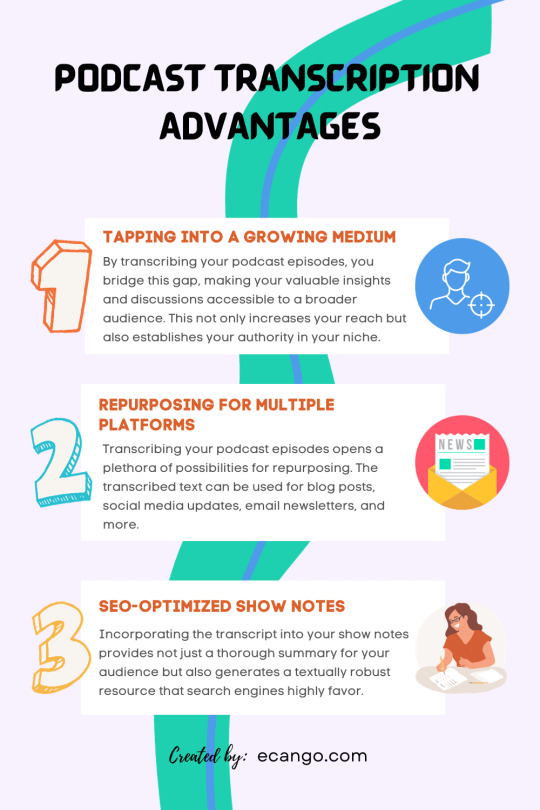
Don't Miss Out! Here's Why Podcast Transcription is a Game-Changer! 🚀🔥
Ready for a revolution in your podcast game? 🎧✨ Say hello to transcriptions - the secret sauce you can't afford to miss! 🤩
Boost your discoverability, engage a wider audience, and make your content timeless. 🌐💬 Don't let your words fade away, make them unforgettable! 🚀🔍
#podcast#search engine optimization#transcript#technology#artificial intelligence#content creator#strategy#podcasting#youtube#spotify#video post
0 notes
Text

Wondering why? Because transcribing your videos is the game-changer you didn't know you needed. 🤔🔍
Imagine this: your audience, on the go, absorbing your message even without turning on the sound. 🎧💬 Transcribing makes it happen! Boost engagement, accessibility, and SEO.
Don't let your content get lost in the noise. Start transcribing now and make your videos speak louder than ever!
#VideoTranscription #ContentStrategy #2024Upgrade
0 notes
